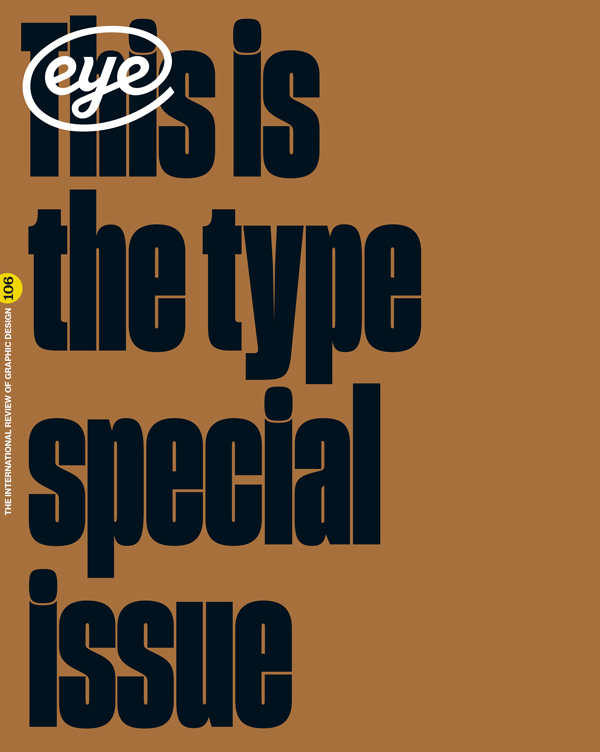Summer 2024
Cutting edge of type
Inscript Experimental Type Festival 2023
4-8 October 2023, online, inscript.tf‘Inscript 2023’, a five-day conference that took place in October 2023, ignited conversations and debates at the intersection of typography and technology. The event, held virtually, provided an interactive platform for graphic designers, type specialists and creatives to explore ideas, research and cutting-edge experiments that are shaping the future of typography and design.
Central to the ethos of ‘Inscript’ is its commitment to accessibility and innovation. With a virtual-first format and affordable pricing ($30), the festival ensured global participation (almost 1300 people) and provided attendees with access to recordings for six months after the event. Vito, the platform used to host the festival, allowed for live conversations to take place throughout the event, making it possible for attendees to discuss present themes, ask questions and share resources with one another. While many digital events I’ve attended have had that function, I have rarely seen such lively participation.
The visual identity of ‘Inscript 2023’, created by creative director Gianpaolo Tucci and designer Kacper Pietrzykowski, embodied the festival’s spirit. At its core was a dynamic interplay of colour, form and typography, dictated by a custom generative tool. The design evolved organically in response to audible input from each speaker and translated this into a continuously shifting visual abstraction – a fitting metaphor for the collaborative and interactive nature of the event – and provided a cohesive and engaging experience for attendees, reinforcing the festival’s commitment to exploring the intersection of design and tech.
Tucci, in his second time at the event, was also the opening act. He offered a behind-the-scenes glimpse into his ‘Aesthetic Imperfections’ project, in which he uses AI and machine learning to generate type. Tucci also spoke of the ever-changing nature of such tools, as prompts continually shift in terms of the types of responses they generate – a sentiment shared by Marian Bantjes in her essay ‘Artificial idiot’ (Eye 105).
Throughout the conference, attendees were treated to a wide range of presentations, each offering a unique perspective on the ever-evolving landscape of typography and design. From Rüdiger Schlömer’s demonstration of typographic knitting, which combines traditional craftsmanship with modern technology, to Studio Dumbar’s exploration of type animations (see Eye 104) that respond to sound, the presentations showcased the breadth and depth of innovation within the field.
‘Inscript’ also served as a platform for showcasing advancements in typography worldwide, amplifying voices from diverse cultural backgrounds and regions. One of these voices was Golnar Adili (see ‘Global type tour’ in Eye 102), whose multidisciplinary experimental approach turned Persian poetry into physical structures. She was preceded by Adam Yeo, a graphic designer from Ivory Coast, who shared his efforts in preservation and celebration of indigenous scripts, such as the Bété script. Yeo’s research explored the representation of traditional African graphic symbols and scripts, demonstrating the power of typography as a vehicle for cultural expression and identity preservation. Lisa Huang’s examination of typographic terminology in her Words of Type multilingual encyclopaedia, as well as Bobby Joe Smith III’s investigation into the decolonisation of orthography and aesthetic sovereignty of the Lakota language challenged attendees to reconsider the cultural and historical contexts of type. Many presentations underscored the importance of inclusivity and representation in shaping the future of type – a conscious effort from the festival’s curatorial team, Ksenya Samarskaya, Alex Slobzheninov and Loukas Karnis.
Several talks underscored the tactile nature of the design process in an increasingly digital world. Tra Giang Nguyen, also known as Gydient, spoke about an exhibition project for EVA expo (Exposed Virtual Anonymity exhibition), in which she integrated type design, kinetic typography, creative coding, augmented reality, virtual reality and touch design. The project blurred lines between the augmented and the real, all the while demonstrating the variety of results possible when combining a range of tools and techniques.
One standout presentation came from Rajshree Saraf, whose work explores the complexities of designing a variable font in augmented reality. Her research shed light on the challenges that she encountered when creating type in AR, mainly revolving around legibility, while also highlighting the potential for dynamic and interactive design processes for type in virtual settings. Similarly, Liad Shadmi’s presentation on ‘The Alphabetical Room’ explored the concept of typography as a three-dimensional form. By transforming letterforms into physical structures using grid systems he developed, Shadmi challenged attendees to rethink the relationship between typography and the built environment.
As the festival drew to a close, Simon Merz (Dinamo type foundry) launched a discussion on transforming typography into tangible objects, while Rozi Zhu incorporated – somewhat disturbingly – AI-generated audio into her presentation. This seemingly stylistic choice embodied Zhu’s questioning of what ‘human design’ is in relation to language, legibility, letterforms and nature.
‘Inscript 2023’ was not just a celebration of creativity; it was a testament to the power of collaboration, exploration and experimentation. As we reflect upon the insights shared and connections forged during the festival, we are reminded of the boundless possibilities that lie at the intersection of typography, technology and human ingenuity. ‘Inscript’ inspires and empowers designers to push the boundaries of what is possible, charting a course towards a more innovative and inclusive future. The next ‘Inscript’ will take place from 16-20 October 2024.
Eye is the world’s most beautiful and collectable graphic design journal, published for professional designers, students and anyone interested in critical, informed writing about graphic design and visual culture. It is available from all good design bookshops and online at the Eye shop, where you can buy subscriptions and single issues.

